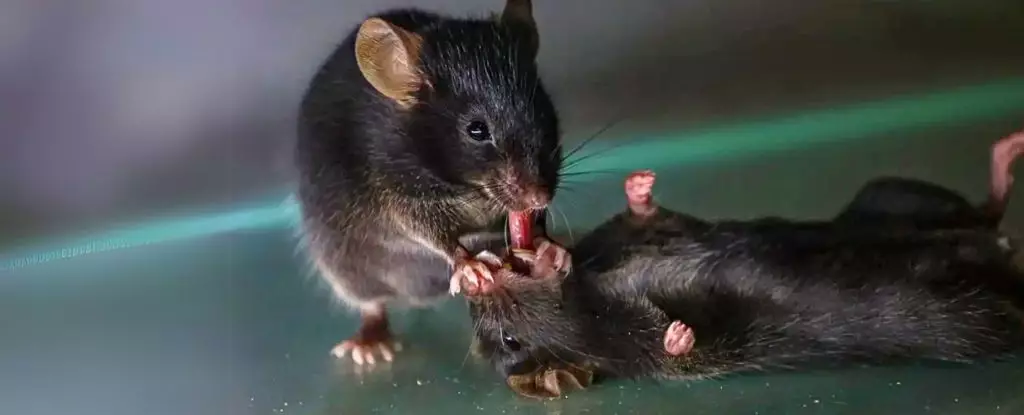Recent research brings to light the fascinating world of mice and their remarkable tendencies to assist their unconscious companions. This study, conducted by neuroscientists at the University of Southern California (USC), unravels layers of complexity in the social behaviors of these small mammals, suggesting profound implications for our understanding of empathy and altruism in the animal kingdom. The results indicate that the instinct to aid others in distress may be deeply ingrained in mammalian heritage, not solely confined to human behavior.
Interestingly, the study highlights how mice employ a form of rudimentary ‘first aid,’ leveraging instinctual actions that include physical interventions rather than medical techniques. The research revealed that these ‘bystander’ mice engage in specific actions—most notably tongue-pulling—to assist their unresponsive peers. This unconventional method actually serves a valid physiological purpose; it enhances airway function, potentially leading to quicker recovery for the incapacitated mice.
The observations made in this research echo findings from previous explorations that investigated mouse responses to anesthetization, with neural circuits tied to these rescue actions becoming activated. While we cannot definitively conclude that these mice possess a conscious intention to help, the repeated attempts to revive familiar companions over a span of days hint at a level of awareness and social comprehension that merits further examination.
A captivating aspect of this research is the noted familiarity bias among the mice during their rescue attempts. The study indicated that mice are significantly more likely to try resuscitating companions they recognize, as opposed to strangers. This insight challenges simplistic interpretations of animal behavior and suggests a more nuanced cognitive understanding — that these mice consider the identity and condition of their companions when they witness a peer in distress.
James Burkett, a neuroscientist at the University of Toledo, emphasizes this point, asserting that the responses observed extend beyond reflexive behavior. Instead, the findings point towards thoughtful engagement with situational contexts. By closely observing the interactions, the researchers documented behaviors in a sequential manner, starting with sniffing, followed by grooming, ultimately culminating in the more physical action of tongue pulling. This progressive engagement signifies a potential awareness of the plight faced by their companions.
While this study centers on mice, it shares thematic parallels with altruistic behaviors observed in larger-brained mammals, such as dolphins and elephants. In these species, acts of assistance and caregiving have been well-documented, leading researchers to postulate that these empathetic behaviors may be evolutionary remnants from common ancestors shared across diverse mammal groups.
The findings with mice open a new avenue for investigating altruism within smaller mammals, a domain that remains relatively unexplored within scientific literature. Recognizing that mammals of all sizes may possess an inherent drive to assist their companions could reshape our understanding of social bonds and cooperative interactions in animal behavior.
Diving deeper into the neurological aspects, the study goes on to identify specific brain regions that become activated during these altruistic interactions. The medial amygdala, in particular, exhibited heightened activity when confronted with unresponsive peers, distinguishing these ‘first aid’ behaviors from other forms of interaction witnessed in stressed situations. The discovery of the role of oxytocin, a hormone linked to social bonding, in the caretaking mice underscores the physiological foundations of empathy.
This emerging understanding hints at shared and complex neural pathways across species that govern altruistic behavior, suggesting the social fabric of mammals may be intricately woven with empathy at its core.
This exploration into the behaviors of mice prompts a reevaluation of how we consider altruism and cognitive empathy across the animal kingdom. As these findings unfold, they encourage a broader discussion surrounding the evolutionary roots of caregiving behaviors. The act of one mouse attempting to revive another not only enriches our understanding of the cognitive abilities of these creatures but also serves as a reminder of the deep-seated instinct to care for one another—a characteristic that transcends species and fosters communal living. Such insights have profound implications for conservation efforts and our approach to understanding the animal behavioral spectrum, paving the way for further research into the roots of empathy in diverse mammalian species.

